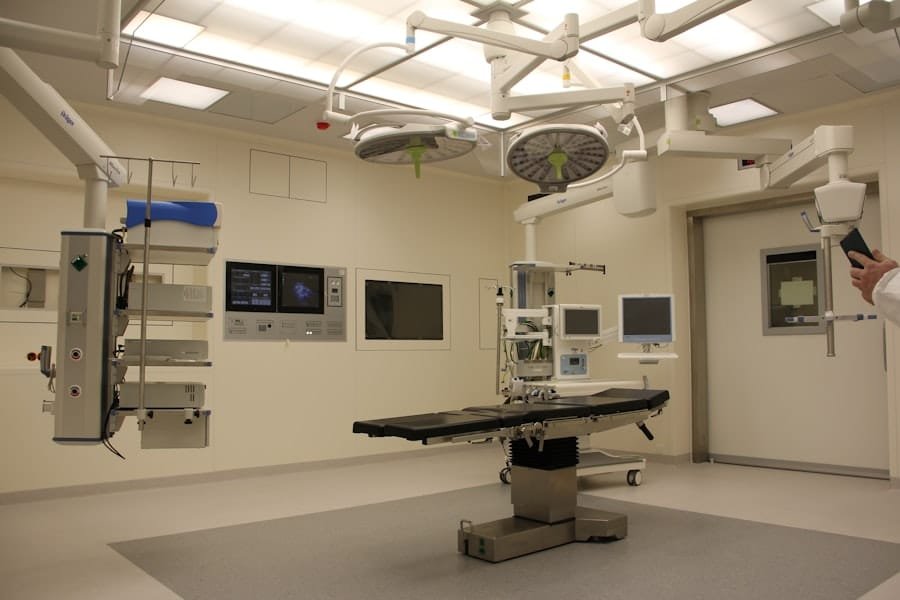The integration of artificial intelligence (AI) into the realm of AI-powered medical diagnostics marks a significant turning point in healthcare. As the volume of medical data continues to grow exponentially, traditional diagnostic methods often struggle to keep pace. AI-powered systems leverage advanced algorithms and machine learning techniques to analyse vast datasets, enabling healthcare professionals to make more informed decisions.
This technological evolution not only enhances the accuracy of diagnoses but also streamlines the overall process, ultimately leading to improved patient outcomes. AI’s potential in medical diagnostics is vast, encompassing various applications from imaging analysis to predictive analytics. By harnessing the power of AI, healthcare providers can identify patterns and anomalies that may be imperceptible to the human eye.
This capability is particularly crucial in fields such as radiology, pathology, and genomics, where early detection can significantly alter the course of treatment. As we delve deeper into the transformative impact of AI on medical diagnostics, it becomes evident that this technology is not merely an adjunct to traditional methods but a fundamental shift in how healthcare is delivered.
Summary
- AI-powered medical diagnostics use advanced technology to assist in the diagnosis and treatment of medical conditions, revolutionising the healthcare industry.
- AI has the potential to revolutionise medical diagnostics by improving accuracy, efficiency, and speed of diagnosis, leading to better patient outcomes.
- The benefits of AI-powered medical diagnostics include improved accuracy, faster diagnosis, personalised treatment plans, and the ability to handle large amounts of data.
- Challenges and limitations of AI in medical diagnostics include data privacy concerns, lack of transparency in decision-making, and the need for continuous validation and regulation.
- Examples of AI-powered medical diagnostic tools include image recognition software for radiology, predictive analytics for disease risk assessment, and natural language processing for medical record analysis.
How AI is Revolutionising Medical Diagnostics
AI is revolutionising medical diagnostics through its ability to process and interpret complex data with remarkable speed and precision. Machine learning algorithms, a subset of AI, are designed to learn from data inputs and improve their performance over time. In the context of medical diagnostics, these algorithms can analyse images from X-rays, MRIs, and CT scans, identifying abnormalities such as tumours or fractures with a level of accuracy that often surpasses human radiologists.
For instance, studies have shown that AI systems can achieve diagnostic accuracy rates comparable to or even exceeding those of experienced clinicians in certain scenarios. Moreover, AI’s capabilities extend beyond image analysis. Natural language processing (NLP), another branch of AI, allows for the extraction of valuable insights from unstructured data sources such as clinical notes and research articles.
By synthesising information from diverse datasets, AI can assist in diagnosing rare diseases or conditions that may not be immediately apparent. This multifaceted approach not only enhances diagnostic accuracy but also reduces the time required for clinicians to arrive at a conclusion, thereby expediting patient care.
Benefits of AI-Powered Medical Diagnostics

The benefits of AI-powered medical diagnostics are manifold, significantly enhancing both the efficiency and effectiveness of healthcare delivery. One of the most notable advantages is the reduction in diagnostic errors. Traditional diagnostic processes are often subject to human limitations, including fatigue and cognitive biases.
AI systems, on the other hand, operate without such constraints, providing consistent and objective analyses. This reliability is particularly crucial in high-stakes environments where timely and accurate diagnoses can be life-saving. Additionally, AI can facilitate personalised medicine by analysing individual patient data alongside broader population health trends.
By identifying specific risk factors and predicting disease progression, AI systems enable healthcare providers to tailor treatment plans to the unique needs of each patient. This shift towards personalised care not only improves patient satisfaction but also optimises resource allocation within healthcare systems. Furthermore, the integration of AI can lead to cost savings by streamlining workflows and reducing unnecessary tests or procedures.
Challenges and Limitations of AI in Medical Diagnostics
Despite its numerous advantages, the implementation of AI in medical diagnostics is not without challenges and limitations. One significant concern is the quality and representativeness of the data used to train AI algorithms. If the training datasets are biased or lack diversity, the resulting models may produce skewed results that do not generalise well across different populations.
This issue raises questions about the fairness and equity of AI-driven diagnostics, particularly for underrepresented groups in clinical research. Another challenge lies in the interpretability of AI algorithms. Many machine learning models operate as “black boxes,” making it difficult for clinicians to understand how a particular diagnosis was reached.
This lack of transparency can hinder trust in AI systems and complicate clinical decision-making. Healthcare professionals must be able to comprehend and justify the recommendations made by AI tools. This then ensures they are integrated effectively into patient care pathways. Addressing these challenges requires ongoing collaboration between data scientists, clinicians, and regulatory bodies to establish best practices for AI implementation in healthcare.
Examples of AI-Powered Medical Diagnostic Tools
Several innovative AI-powered medical diagnostic tools have emerged in recent years, showcasing the technology’s potential across various medical fields. One prominent example is Google’s DeepMind Health, which has developed algorithms capable of detecting eye diseases from retinal scans with remarkable accuracy. In clinical trials, these algorithms have demonstrated performance levels comparable to those of expert ophthalmologists, highlighting the potential for AI to enhance early detection and treatment of conditions such as diabetic retinopathy.
Another noteworthy application is IBM Watson Health, which utilises natural language processing to analyse vast amounts of medical and patient data. Watson’s ability to synthesise information allows it to assist oncologists in identifying personalised treatment options. For cancer patients, based on their unique genetic profiles and clinical histories. This capability exemplifies how AI can support clinicians in making evidence-based decisions that align with the latest research findings.
Ethical and Legal Considerations in AI-Powered Medical Diagnostics

Patient Privacy and Data Security
One primary concern is patient privacy and data security. The vast amounts of data required to train AI algorithms often include sensitive health information, necessitating robust safeguards to protect patient confidentiality.
Regulatory Frameworks and Accountability
Healthcare organisations must navigate complex regulatory frameworks governing data protection while ensuring compliance with laws such as the General Data Protection Regulation (GDPR) in Europe. Additionally, there are ethical implications surrounding accountability in cases where AI systems make erroneous diagnoses or recommendations. Determining liability when an AI tool contributes to a misdiagnosis poses significant challenges for legal frameworks that have traditionally centred on human practitioners.
Informed Consent and Clinical Practice
Establishing clear guidelines regarding accountability will be essential as AI becomes increasingly integrated into clinical practice. Furthermore, ongoing discussions about informed consent are crucial; patients should be made aware when AI tools are involved in their diagnostic processes and understand how their data will be used.
Future Developments and Trends in AI-Powered Medical Diagnostics
The future of AI-powered medical diagnostics is poised for remarkable advancements as technology continues to evolve. One emerging trend is the increasing integration of AI with wearable devices and remote monitoring technologies. These innovations enable continuous health tracking and real-time data collection. This allows for proactive identification of potential health issues before they escalate into more serious conditions.
As telemedicine gains traction, the synergy between AI diagnostics and remote care will likely enhance patient engagement and accessibility. Moreover, advancements in explainable AI (XAI) are expected to address some of the interpretability challenges currently faced by clinicians. By developing models that provide clear rationales for their predictions. Researchers aim to foster greater trust in AI systems among healthcare professionals.
This transparency will be crucial for integrating AI into clinical workflows effectively and ensuring that practitioners feel confident in utilising these tools as part of their diagnostic processes.
The Impact of AI on the Future of Medical Diagnostics
The impact of artificial intelligence on medical diagnostics is profound and far-reaching, heralding a new era in healthcare delivery. As we continue to explore the capabilities of AI-powered tools, it becomes increasingly clear that they hold the potential to transform how diagnoses are made and treatments are tailored to individual patients. While challenges remain regarding data quality, interpretability, and ethical considerations, ongoing research and collaboration among stakeholders will pave the way for the responsible integration of this technology into clinical practice.
As we look ahead, it is essential for healthcare professionals, technologists, and policymakers to work together to harness the full potential of AI while addressing its limitations. The future landscape of medical diagnostics will undoubtedly be shaped by these advancements, ultimately leading to improved patient outcomes and a more efficient healthcare system overall. The journey towards fully realising the benefits of AI in medical diagnostics is just beginning, but its promise is already evident in numerous applications across various medical fields.
AI-powered medical diagnostics have revolutionised the healthcare industry, making it more efficient and accurate. According to a recent article on the branding agency in San Francisco. The use of artificial intelligence in medical diagnostics has not only improved patient outcomes but has also helped healthcare professionals make more informed decisions. This technology has the potential to transform the way we approach healthcare, making it more personalised and effective.
FAQs
AI-Powered Medical Diagnostics refers to the use of artificial intelligence (AI) technology to assist in the diagnosis and interpretation of medical imaging and clinical data.
AI-Powered Medical Diagnostics works by using algorithms and machine learning to analyse medical images, such as X-rays, MRIs, and CT scans, as well as clinical data to assist healthcare professionals in making accurate and timely diagnoses.
AI-Powered Medical Diagnostics works by using algorithms and machine learning to analyse medical images, such as X-rays, MRIs, and CT scans, as well as clinical data to assist healthcare professionals in making accurate and timely diagnoses.
Limitations of AI-Powered Medical Diagnostics include the need for large and diverse datasets to train the algorithms, potential biases in the data used, and the importance of human oversight to ensure the accuracy and reliability of the AI-generated diagnoses.
AI-Powered Medical Diagnostics is increasingly being used in healthcare settings, with applications in radiology, pathology, and other medical specialities. However, its widespread adoption is still in the early stages and continues to evolve.
